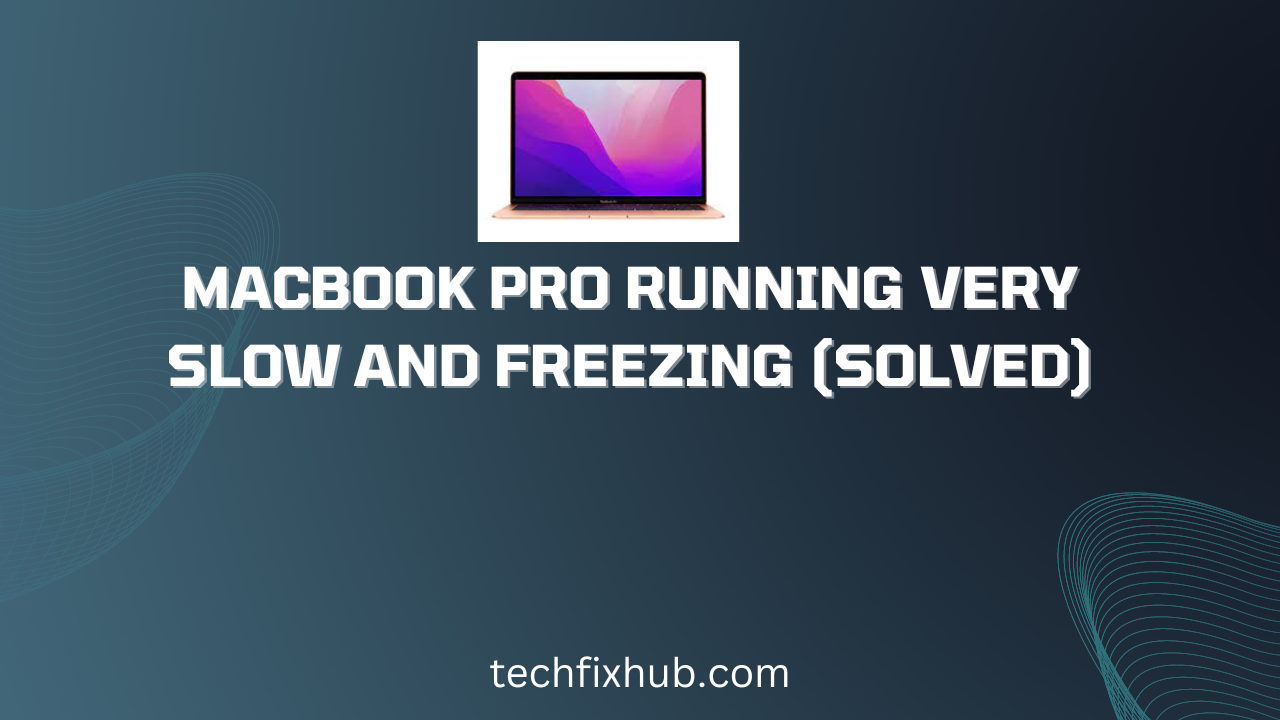One of the biggest differentiators of a MacBook from the typical Windows laptop is the fact that it runs almost flawlessly. Freezing, crashing, and slowing down are terms you’ll only find in a Windows user’s dictionary, as MacBooks usually come with industry-leading hardware.
However, you may notice your MacBook Pro slowing down once in a while. While you may be getting used to that, you shouldn’t, as your laptop wasn’t designed to slow down. With some of the best processors in the world of computing, your MacBook Pro should always run snappily.
If your MacBook Pro runs very slowly to the point of freezing, we have solutions. In this article, you’ll learn some of the most common reasons why your MacBook Pro might be running slowly and some of the best ways to speed it up.
Why Is Your MacBook Pro Running Very Slow And Freezing And How To Fix It
There are a couple of reasons why your laptop might be running at snail speed, and that isn’t unrelated to hardware and software issues. Some of the reasons are not your laptop’s fault, while others are problems with the computer’s hardware that you should consider solving.
Without further ado, here are some of the reasons why your MacBook Pro might be running very slow and freezing.
- Low RAM
If your MacBook Pro starts to run tasks sluggishly when you have multiple programs open, you’re simply suffering from insufficient memory. Your computer’s memory is the storage for short-term information that the computer can access on request.
When the RAM becomes full, your computer will be forced to use a portion of your hard drive like the RAM. However, your hard drive is technically incapable of exchanging data at similar speeds as a volatile memory, which will have a toll on the performance of your MacBook Pro.
Before trying to kill apps to free your device’s memory, it’s important to diagnose the problem and confirm that it’s indeed low RAM. If the problem is actually from your memory, you can close some apps to free memory, which will only work over the short term. Eventually, you’ll gave to replace your computer if the problem continues to happen repeatedly.
Here are the steps required to check for the amount of free RAM on your MacBook Pro.
- Launch Activity Monitor
If you’re coming from a Windows background, the activity monitor is like the Task Manager, but for Mac. It lists how much processing power, RAM, and storage your MacBook Pro is using in real-time, making it the best destination to check if low memory is the problem.
You can launch Activity Monitor on a MacBook by navigating to Applications, opening Utilities, and launching the Activity Monitor utility from there. Alternatively, you can open the tool by assigning a shortcut button like the default Ctrl + Shift + Escape key combination on Windows laptops.
- Navigate to the Memory section
After opening Activity Monitor, navigate to the memory tab and select Memory Pressure near the bottom of the window. At the memory pressure tab, you should see a graph that’s indicative of how much memory you have left on your computer.
If the graph is green, you have sufficient RAM on your computer. You should consider not opening too many additional apps if the graph is yellow and your computer will certainly slow down massively if the graph is red. If the graph is yellow or red, the slowdown is almost certainly caused by insufficient memory.
In that case, consider quitting some of the apps you currently have open to free up a lot of RAM on your computer. Instead of closing the app using the GUI, you should consider quitting them directly from the Activity Monitor, as clicking on the close icon on the app’s interface doesn’t delete it from your memory.
If you use an old MacBook Pro, it might be time for an upgrade. Intel MacBook Pros should have 16GB of memory at the very least, while M1 MacBook Pros can make do with 8GB.
If you have anything less than the quoted figures, you should consider upgrading your computer or you’ll find yourself quitting apps a bit too frequently.
- You have too many browser extensions
It’s no longer a secret that most people spend most of their time using their computer’s browser. Also, it’s common knowledge that browser extensions are notorious for slowing down your browser when they become excessive. If you have too many extensions installed on your browser, consider removing the unnecessary ones.
While we understand that removing browser extensions might be a difficult choice, it’s a necessary step. You should certainly remove some extensions if every other app, apart from your browser slows down when you use your MacBook Pro.
You can remove extensions from the Safari browser by navigating to Extensions through the Preferences menu in the browser. If you don’t use an extension frequently, it might be a great candidate for deletion.
You can also remove extensions from the Chrome browser by navigating to Extensions from the Window menu in the browser. All extensions have a delete button which you can use to uninstall them from the browser on your MacBook Pro.
If removing your browser extensions doesn’t speed up your browser or your computer, you may need to try out another solution instead.
- Scan your MacBook for malware
While most people believe MacBooks can’t be infected with malware, that is not the case. Thanks to viruses like Fruitfly and MacDownloader, many MacBook Pro users are now getting the feeling that they need some kind of external protection.
This is even true when your MacBook Pro runs so slow that it freezes. While this is one of the worst-case scenarios, your Mac might be infected by a virus that uses its processing power. Try running and virus scan with a trusted antivirus program to prove or disprove this theory.
READ MORE: How Do I Find Out What Is Slowing Down My Mac?
READ MORE: How To Clean Out Your Mac To Make It Run Faster
READ MORE: Mac Keeps Opening Random Tabs {Fix}
READ MORE: How To Reset MacBook Pro To Factory Settings Without Password Or Apple ID
Conclusion
Nobody wants a slow computer, and if you paid the premium for a MacBook Pro, you don’t deserve a freezing computer either. However, it’s impossible to keep your computer running perfectly without ever running into some kind of problem.
To help you solve those problems, I’ve compiled some fixes in this article. If you can’t speed up your MacBook Pro, it might just be too old to be productively fast. Otherwise, try contacting Apple to see if they can help you get your MacBook Pro up to speed.

